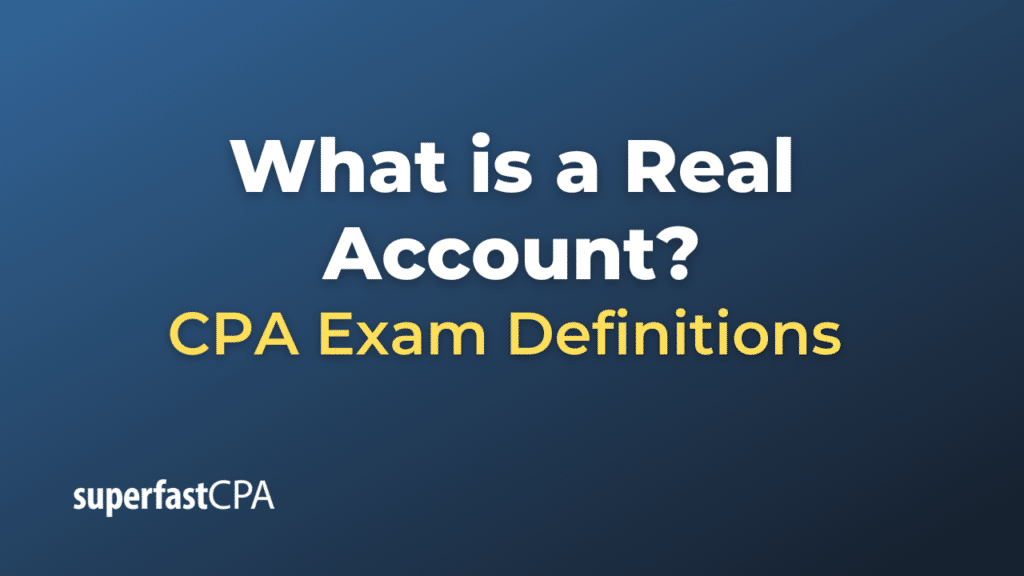Real Account
In accounting, a “real account” refers to accounts related to assets, liabilities, and equity. Real accounts are permanent accounts, which means their balances are carried forward from one accounting period to the next. They do not close at the end of the accounting period; instead, they remain open to accumulate balances over the life of the company.
Real accounts contrast with “nominal accounts” or “temporary accounts,” which include revenue, expense, and dividend accounts. Nominal accounts are zeroed out (closed) at the end of each accounting period. Their balances are transferred to the retained earnings account, ensuring that they start each new period with a zero balance.
Examples of Real Accounts:
- Assets Accounts: These include tangible assets like machinery, land, and buildings, and intangible assets like patents and copyrights.
- Cash
- Accounts Receivable
- Buildings
- Equipment
- Liabilities Accounts: These are the debts and obligations of a business.
- Equity Accounts: These represent the owners’ rights or claims to the assets of the business.
The key characteristic of real accounts is their permanence. They exist and continue to accumulate balances until the entity is liquidated or the particular asset, liability, or equity account is settled or removed. When you’re recording transactions, real accounts are impacted by the Golden Rule of Accounting for Real Accounts, which states: “Debit what comes in, Credit what goes out.” This means, for instance, when an asset comes into the business, it’s debited, and when it leaves, it’s credited.
Example of a Real Account
Let’s illustrate the concept of real accounts with a simple business transaction example.
Alex starts a small bookstore. To set up the store, he invests $10,000 of his own money and takes a loan of $5,000 from the bank.
Transactions and Their Impact on Real Accounts:
- Alex Invests $10,000:
- Cash Account (Asset): This is a real account. The store receives cash, so the Cash account is debited by $10,000.
- Owner’s Equity (Common Stock): This is also a real account. Alex’s equity in the business increases because of his investment. The Common Stock account is credited by $10,000.
- Alex Takes a $5,000 Loan:
- Cash Account (Asset): The business receives an additional $5,000 in cash from the bank loan. The Cash account is debited by $5,000.
- Bank Loan (Liability): This is a real account that represents the business’s obligation to pay back the bank. The Bank Loan account is credited by $5,000.
Account Balances After the Transactions:
- Cash Account: $15,000 (Debit balance, because assets have a natural debit balance)
- Common Stock (Owner’s Equity): $10,000 (Credit balance, as equity has a natural credit balance)
- Bank Loan (Liability): $5,000 (Credit balance, because liabilities have a natural credit balance)
In this example, the Cash, Common Stock, and Bank Loan accounts are all real accounts. Their balances won’t be reset to zero at the end of the accounting period. Instead, they will carry forward and be affected by future business transactions. If Alex earns revenue, buys inventory, or incurs expenses in the course of running the bookstore, those transactions will involve nominal accounts (like Sales Revenue or Rent Expense). However, the resulting profits or losses from those nominal accounts will eventually impact the equity real account (specifically, Retained Earnings) at the end of the accounting period.













